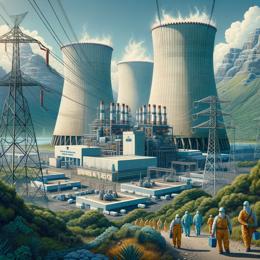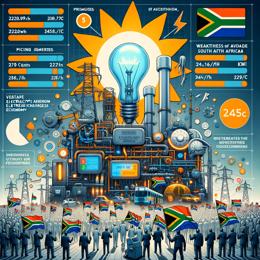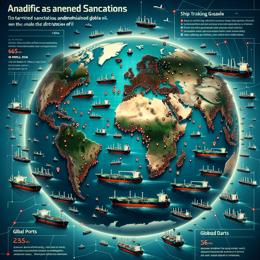Image created by AI
Kusile Power Plant Struggles to Reach Potency Amidst Ongoing Repairs and Retrofitting
As Eskom lauds the current enhanced performance at the Kusile Power Plant, it may be prudent to temper celebration with caution. The power station, which has long been a subject of concern due to its operational difficulties, still requires substantial retrofitting and repairs to approach its designed capacity.
The recent briefing on government's Energy Action Plan shed light on positive developments with Kusile's four commercially operational units exhibiting an impressive energy availability factor of 90%. Nevertheless, looming beneath this favorable statistic is the reality that three of these performing units must soon be withdrawn for retrofitting to adhere to legal emissions standards.
In the latter part of 2023, an exemption by the environmental department allowed these units to feed the grid through temporary emission stacks. This was a makeshift solution to mitigate load-shedding, while a rectification plan for the flue-gas desulphurisation system, impaired by a collapse from sludge accumulation, was being orchestrated.
Although Eskom executives herald the unit's contributions in reducing power outages, the neglect to address the health implications for communities near Kusile due to increased emissions has been apparent. The deadline to discontinue the use of such provisional stacks is looming in March 2025.
Scrutiny intensifies as a report made by VGBE, a German consultancy firm, underlines several concerns that could throttle Kusile's maximum output capability significantly. Inadequate ash removal systems, lack of a continuous coal supply due to missing conveyor belts, and the dysfunctionality of essential facilities like storage areas and laboratories compound the issues at the coal-fired power plant.
Unit 5's progress is trailing behind the schedule, with its commercial operation pushed to mid-2024, whereas Unit 6's introduction has also been rescheduled to early 2025. These deferments echo the larger pattern of delays characterizing Kusile's journey to full functionality.
Highlighting the issues is the alarming revelation that Kusile's most efficient unit is managed not by Eskom but by the manufacturer. This unveils the stark contrast in performance levels when units are handled by adequately trained personnel versus Eskom's current operating team, who, as per VGBE's findings, have not been sufficiently prepared to run new technology, nor have they shown prowess in problem-solving and corrective action.
The assertions made by VGBE encapsulate the crux of what hinders Kusile: the technical capability is present, but effective application is stifled by a complex management system. Training programs, essential for operational excellence, have seen delays and deferrals, resulting in a workforce that possesses the knowledge but lacks the finesse to optimize performance.
As Eskom continues on the journey to get Kusile up to scratch, the road ahead is fraught with challenges. With extensive modifications on the cards and the pressure to upskill its workforce urgently, it is clear that the celebration of Kusile's advancements must be viewed through a cautious lens, with an understanding of the rigorous work that remains.










